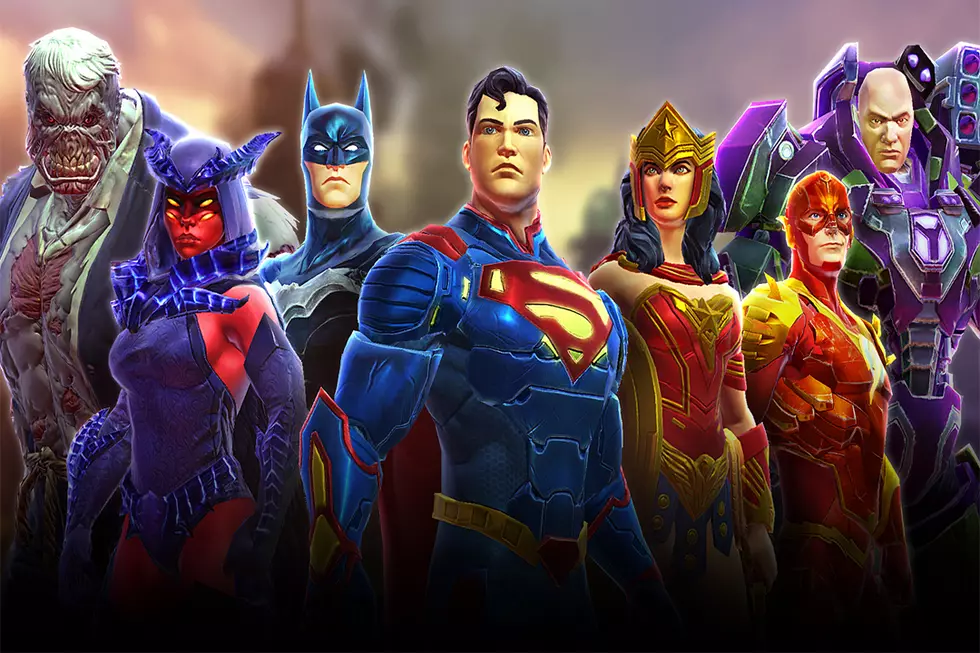![When Sonny Liew Dons the Helmet of Dr Fate, Weird Stuff Happens [Interview]](http://townsquare.media/site/622/files/2015/06/drfate1.jpg?w=980&q=75)
When Sonny Liew Dons the Helmet of Dr Fate, Weird Stuff Happens [Interview]
This week sees a new hero leap weirdly into the DC Universe, as Khalid Nassour finds himself in a desperate flooding city that has no future unless he puts on the ominous helmet of Dr Fate and gets mystical. In the hands of creative team of Paul Levitz, Sonny Liew and Lee Loughridge, the first issue of the new series is a bold, bizarre and brilliant new angle on DC’s superhero canon, throwing the traditional origin story into an off-kilter direction.
When the book was first announced by DC, one of the big surprises was the news that Liew, best known for his work on stories like The Shadow Hero with Gene Luen Yang at First Second, was making the move into work-for-hire heroes. With the first issue now on the shelves, we spoke to Liew about how he got involved with the series, how he views Khalid’s world, and also the recent whirlwind created around his creator-owned project The Art of Charlie Chan Hock Chye.
ComicsAlliance: It was quite a surprise when you were first announced as the artist on Dr Fate --- how did you come to get involved with the series?
Sonny Liew: I’d met Paul [Levitz] at the Singapore Toys Game and Comic Con a couple of years back when he was a special guest at the event, and we’d kept in touch off and on. For some reason he thought of me when he came up with the idea for a new series --- he suggested my name to the editors at DC, and they seemed to think it might be a fit too.
To be honest I’d approached it with some trepidation, mostly because of the intense schedule of a monthly comic. I thought I’d only signed up to do the teaser story, just to let both sides get a feel of the other --- but the next thing I knew the series had been announced. Which is just as well, I’d have been really wishy washy about making a decision otherwise!
CA: What do you think drives the new Dr Fate, Khalid, as a person and as a hero? What kind of a mindset does he have?
SL: Heh, that’s really more Paul’s domain. From what I’ve seen so far, Khalid is just trying to figure out how his life has turned so far upside down. It’s not everyday you wake up and have the world’s fate on your shoulders, much less its magical golden helm on your head.
CA: Khalid has a bit of Peter Parker about him – an everyman likability. He certainly doesn’t look like a pumped-up Superman figure.
SL: Yeah, Paul’s script did describe him in roughly those terms, and personally I never quite understood why superheroes had to be really buff. It doesn’t seem to make a lot of sense that someone with, say, super strength and invulnerability would need to hit the gym. Maybe it’s more a case of having the visual representation match the idea of a heroic figure… if that’s the case I think it’s still interesting to play off those tropes, to have a superhero figure who look a little more like an average person on the street.
For all that, I’ve tried to keep the look of the helmet fateful --- it does represent, after all, the most iconic element of the character’s makeup.
CA: There are several different elements playing into the series, but the one that came across most strongly in the preview was the overwhelming sense of romance, both between Khalid and Shaya, and just generally in Khalid’s personality. Would you consider yourself a romantic?
SL: Hmmm… I don’t usually think of myself that way… maybe more of an idealist, somehow hopeful that the world can be a better place. It’s tough sometimes, hearing all the news of suffering around the world. I guess you have to carry on despite the seeming futility of things sometimes. Not that we really have a choice --- at the end of the day, every one of us has to live by the choices we believe to be right, even if there are seven billion different versions of what that means.
CA: We’re reaching a place now where comics can move away from being white characters appropriating foreign cultural power; and can instead hand Egyptian ancestral power into the hands of an actual Egyptian-American. How important is Khalid’s Egyptian heritage to this series?
SL: Well, on my end, I’m trying to make sure Khalid’s features distinctively reflect his heritage --- the shape of his nose, his hair, the color of his skin. I remember getting Mike Carey to agree with the idea of making Jeriven in My Faith in Frankie Asian as well; it’s always felt important to bring some diversity into comics, which, like most mediums, has tended to be dominated by a certain image of what a protagonist should look like.
CA: How have you found working with Paul Levitz on the book?
SL: Most of the time I’m just hoping to be able to keep up with the demands of the script. Paul’s experience in the industry speaks for itself, and I feel like I have to try to do justice to his writing, standing in the shadows of all the artists he’s worked at before.
CA: I believe you’re working digitally for the first time here --- how has that changed your approach to comics-making? Has it been easy to pick up?
SL: The digital approach is just at the pencilling stage, I still ink the pages traditionally. It was mostly in hope that it would make things go faster. As with most things digital, you can make adjustments and corrections a lot quicker on a computer than if you’re drawing and erasing on real paper. You lose a bit of the sensitivity of a real pencil, but I guess that’s a necessary trade-off for the present.
It hasn’t been that big a departure, work-wise. I’ve done most of the coloring digitally for the longest time, so it’s more of an adjustment than a sea-change.
CA: Are you coloring this series too? What did you want the look of the series to be?
SL: I only did the colors for the teaser story. The very talented Lee Loughridge is handling them for the series itself. I guess overall we’ll be trying to keep the everyday scenes a little more muted, so that the supernatural parts really pop when they happen. I’ve been working with him to try to come up with a palette for the book, and it’ll be interesting to see the mixture of sensibilities that emerges from the process.
CA: DC aside, your most recent project, The Art of Charlie Chan Hock Chye, has just launched, and will come to print in the US in 2016. Can you tell us a little about the book, and what people can expect from it?
SL: I’ve spent most of my life in Singapore, and The Art of Charlie Chan Hock Chye is sort of a labor of love about the place. As the name suggests, it’s part art book, featuring the works of a little-known comics creator. But it’s also about the history of Singapore and of comics, told in way that I hope is fairly unique to the medium.
I’m not too good at describing it, maybe I’ll leave it to this blurb Mike Carey wrote for the book: "[A] masterpiece... This book is a joyous, beautiful, million-faceted thing - a celebration of the comic book medium, a technical masterclass, a thrill ride, a bildungsroman and an unflinching retrospective of the post-war-into-modern era. I love it, and I'm in awe of it.”
CA: It’s just come out that the National Arts Council have pulled funding for the book due to "sensitive content." I was wondering if I could ask your response to the news? Does this only makes it more vital that people see and read about Asian history and politics?
SL: Yeah the news of the withdrawal of the funding raised all sorts of issues. The immediate concern was the publisher’s finances, since they’d made a decision based on having that funding available, so the sudden shortfall made things tricky in what is often a low-margins business.
The media attention and public support here in Singapore since the announcement of the withdrawal has been quite amazing though, so those fears have been allayed somewhat, with the first print run selling out in little over a week.
What remains are questions about the role of an art organization like the NAC, the degree to which it ought to be politically neutral, and I can only hope the book has played some small role in raising the issue.
I think we should always be trying to find out more perspectives about the world. Time is finite, for sure, but every little bit of understanding helps, hopefully, making us more aware of our shared dreams and humanity, a little less likely to live inside our own small worlds. Call it the [David] Foster-Wallace effect, perhaps, to try to see the water around us.
Dr Fate #1 is out now, with The Art of Charlie Chan Hock Chye planned for US release in 2016.
More From ComicsAlliance





![The Magic Flood Is Getting Worse In ‘Doctor Fate’ #3 [Preview]](http://townsquare.media/site/622/files/2015/08/Fate00.jpg?w=980&q=75)



